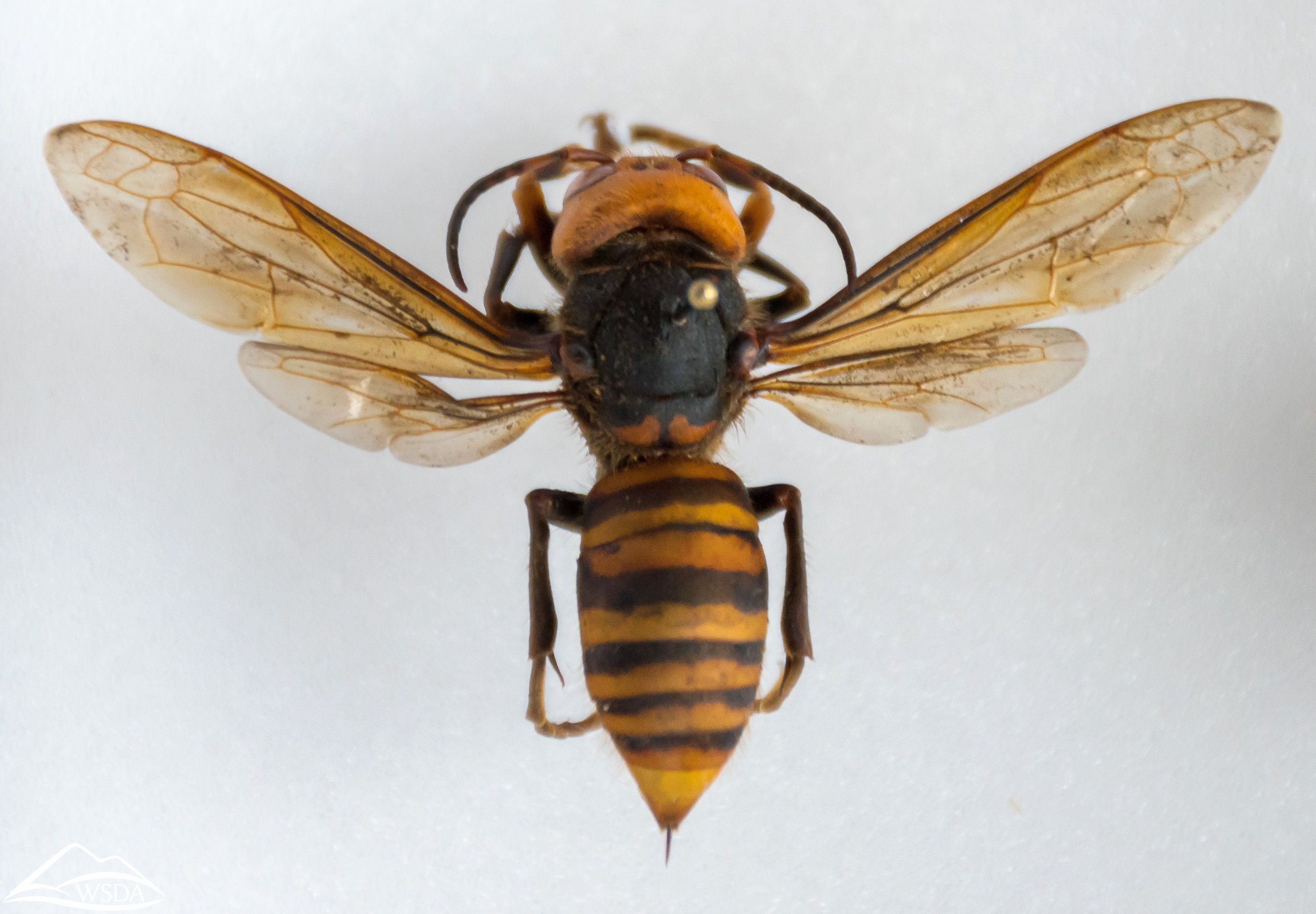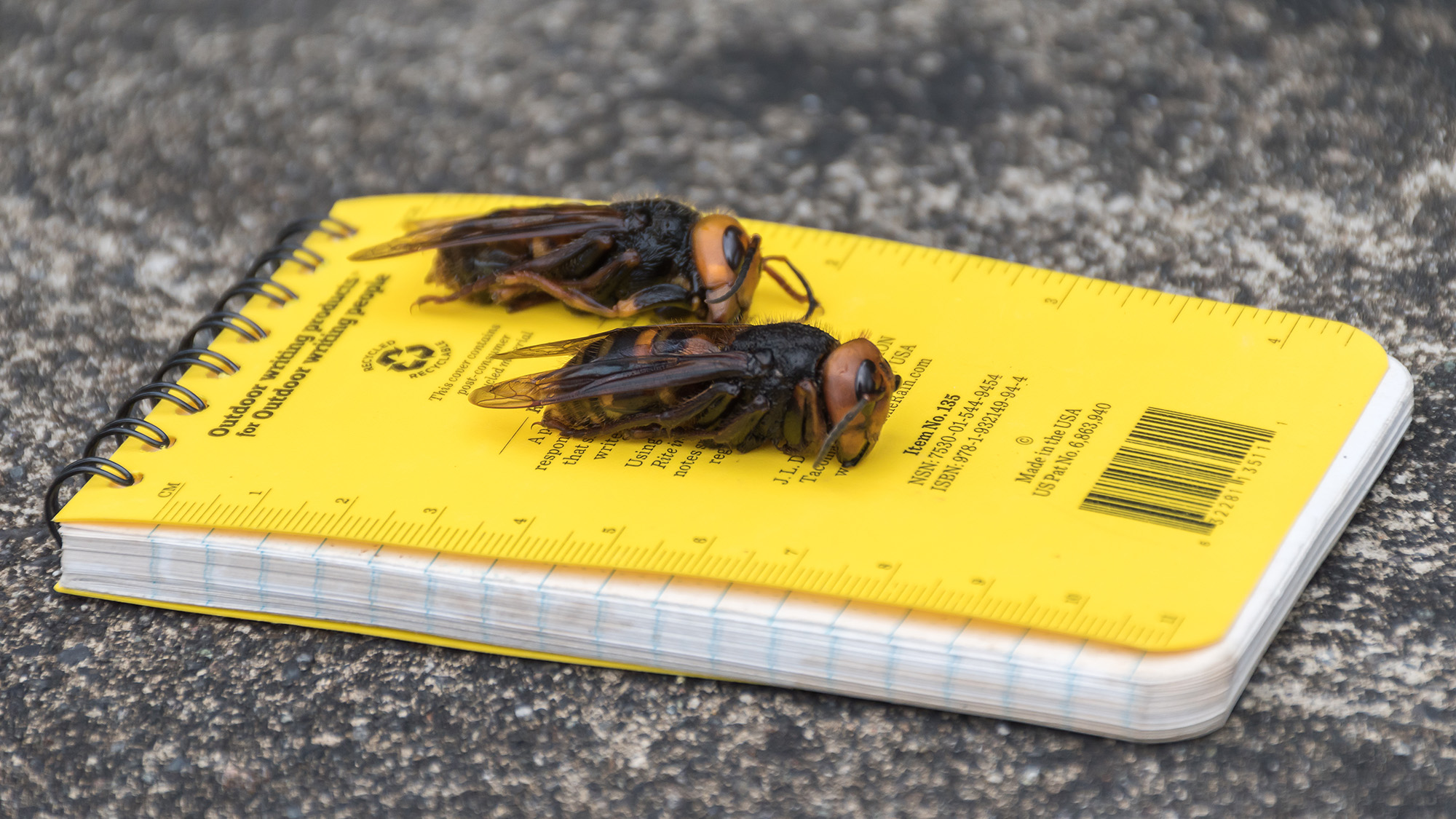Over two years ago, the first Asian giant hornets were spotted in the state of Washington and the province of British Columbia. You may know these insects by their more common name, “murder hornets”. When they first broke into the news, they caused widespread concern. Not only are their stingers larger than those belonging to hornets and wasps native to the United States, but they are known for destroying native beehives and killing entire hives of resident bees and honeybees. Bees are important in the maintenance of our ecosystems and crop growth, so when they became targeted by these non-native Asian giant hornets, concerns for bee welfare increased.

The Washington State Department of Agriculture has remained vigilant since spotting the first hornets in the fall of 2019. In October 2020, they removed a hornet nest in Blaine, Washington by vacuuming the hornets from it. Since then, three additional nests have been identified and two were eradicated throughout 2021. Washington state remains vigilant and has an online form where civilians may report Asian giant hornet sightings.

While the vacuum method of removing Asian giant hornets from the environment is effective when officials know where they reside, other methods that do not rely on reporting hornet sightings will be helpful in controlling their spread. These methods could be developed from studying the behavior of the insects. Recently, a research group identified the chemical composition of female Asian giant hornet sex hormones. It was previously known that female queen hornets release this sex hormone to attract males to nests for mating, so the scientists hypothesized that if they could isolate the chemical composition of these sex hormones, they could use synthetic versions of the hormones to attract males.
The first part of their study involved discovering which gland secretions attracted males. Using filter paper, they rubbed different glands along female hornet bodies and recorded which filter papers the males were attracted to. After isolating samples from the most attractive glands, researchers identified their chemical compositions through using mass spectrometry and gas chromatography (see links for detailed video explanations of these techniques). Mass spectrometry and gas chromatography are commonly used among chemists to separate complex mixtures by the size of their atoms (mass spectrometry) and boiling point (gas chromatography). The result is the discovery of the fundamental elements/chemicals within the mixture- in this case female hornet gland secretions. After performing these analyses, researchers found that the primary components of the secreted sex hormones were hexanoic acid, octanoic acid, and decanoic acid.
The second part of the study involved testing synthetic versions of these acids in the lab and a field environment. In the lab, each of the three acids identified in isolated sex hormones elicited an antennal response in male hornets. In the field, researchers set up sticky traps with each of the acids alone or a mixture of the acids and a decoy deceased male hornet (to pose as a female queen). Each of the three acids attracted males to the sticky traps at a significantly higher rate than sticky traps without sex hormones. None of the three synthetic acids alone attracted as many males as hormones isolated from female glands, but nevertheless the researchers showed that the synthetic sex hormones were effective at trapping males. Notably, the traps that researchers set did not attract female Asian giant hornets or insects of other species. This is significant because it shows that the traps are species-specific and less likely to disrupt non-targeted populations.
Asian giant hornets pose a unique and serious threat to the health of individuals, ecosystems, and agriculture. Not only are their stings painful and dangerous to humans, but if they are allowed to establish a population in North America, they would continue to attack and kill bees, thus disrupting their ability to perform the essential task of pollination. This would disrupt crop production, which could be a huge blow to farmers and the food supply chain. For these reasons, it is important to understand and harness the fundamental behaviors-such as mating- of Asian giant hornets. This will allow agencies like the Washington Department of Agriculture to effectively trap and eliminate Asian giant hornets.
Peer Editor: Jillian Battista